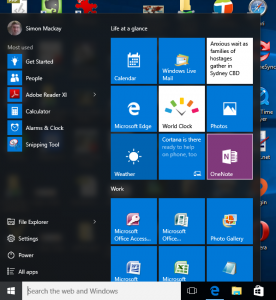Article
A Mobile Crossroads – Android and Windows 10 Mobile | SuperSite For WIndows
My Comments
The Android and Windows platforms do have some things in common such as the ability to share URLs and contact cards via NFC or Bluetooth. As well, these platforms offer native out-of-the-box support for various industry norms at the hardware and software level like USB Audio device classes, DLNA network media acces, FLAC audio codecs, and MicroUSB connections for power and data.
This is augmented by another facture that people who value open-frame computing setups that are vendor-agnostic are likely to run a Windows-based desktop, laptop or tablet computer alongside an Android-based smartphone.
But there are some questions about whether both these platforms are coming to a crossroads in both the desktop and mobile contexts. Issues that have been raised is the availability of mobile-platform software for the Windows Mobile platform as well as Microsoft developing for the Android platform.

Windows 10 in its desktop and mobile phones will tie in with Android for stronger open-frame computing
This disparity is being addressed by Microsoft releasing the so-called “Project Astoria” software to reduce the effort needed by a software developer to port an Android app to Windows 10 and have it work on both desktop and mobile setups and the XBox One games console.
Another attempt that Microsoft was trying is to include the ability to sideload Android app APK files as part of a leaked preview build of Windows 10 Mobile. Here, these files would run in a sandbox of their own so as to assure system stability and security.
On the hardware side, manufacturers like Samsung, LG, Sony including the VAIO personal-computing spinoff, and Lenovo are increasingly targeting Apple’s customer base by offering 2-in-1 notebooks, tablets and smartphones that have that same luxurious cachet and performance level as the iPhone, iPad and MacBook.
It is also in conjunction with Microsoft porting an increasing amount of their productivity software to the Android platform along with writing Android-specific native clients for their online services. A good question that may be worth answering is whether Google will write native clients for their online services as Windows 10 Universal apps.
I see this ending up where Microsoft and Google could effectively give their mobile operating systems equal functionality for “home” and “work” use and support a tighter integration with Android, ChromeOS and Linux to increase the number of choices for personal computing options. Here, these platforms will end up forming a strong “open-frame” computing beach-head that competes effectively with the vertically-integrated platform that Apple offers.



